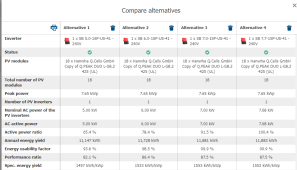Inverters handle appliance loads. Size the inverter for your required loads plus a % more 25-50%?
Charge Controllers handle energy from the solar panels into a battery.
Some inverters also have a built in charge controller, many do not. Some with built in charge controllers, like mine, do not handle DC solar voltage but only AC voltage, as from a liquid fuel generator or the grid. Some inverter / chargers can handle solar DC and grid or generator AC.
I don't know what an SMA SB xxx is and don't have time to look it up. Could you tell us instead?
So your post is somewhat vague as to what you are referring to.





